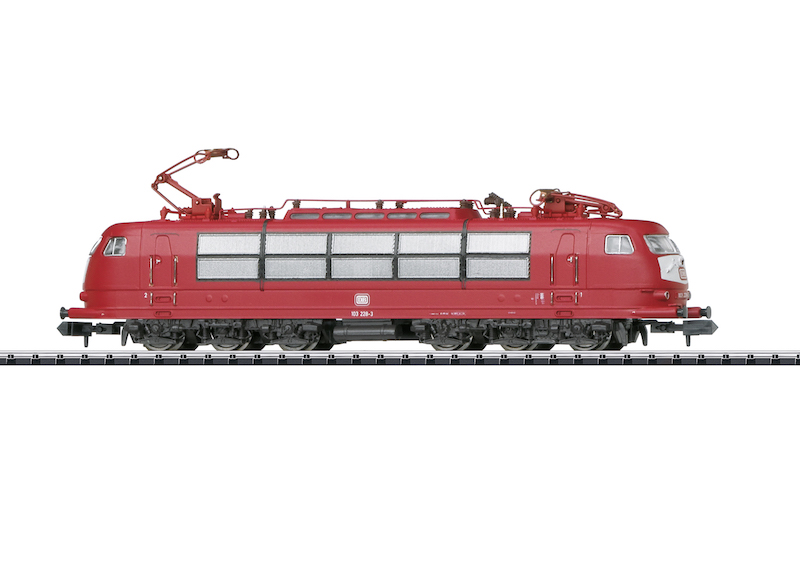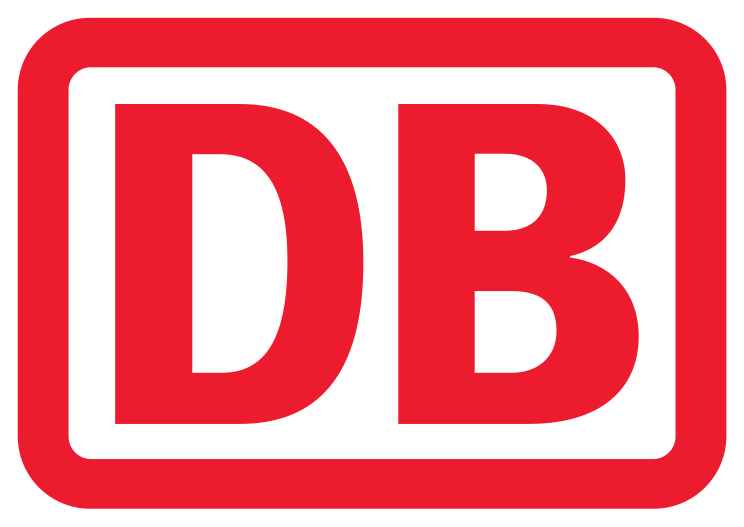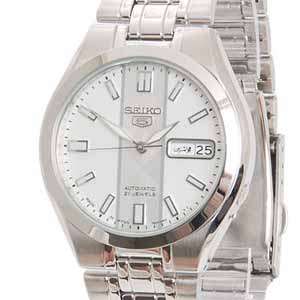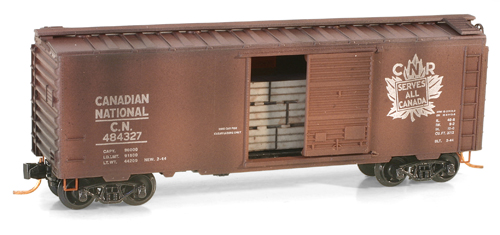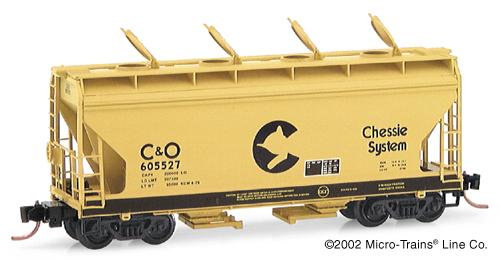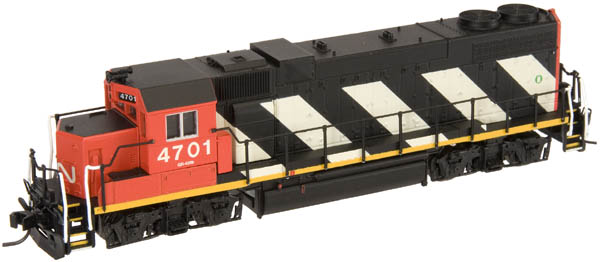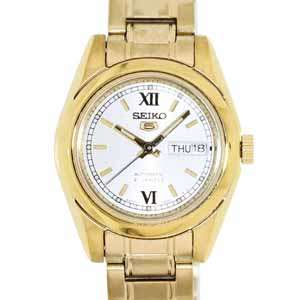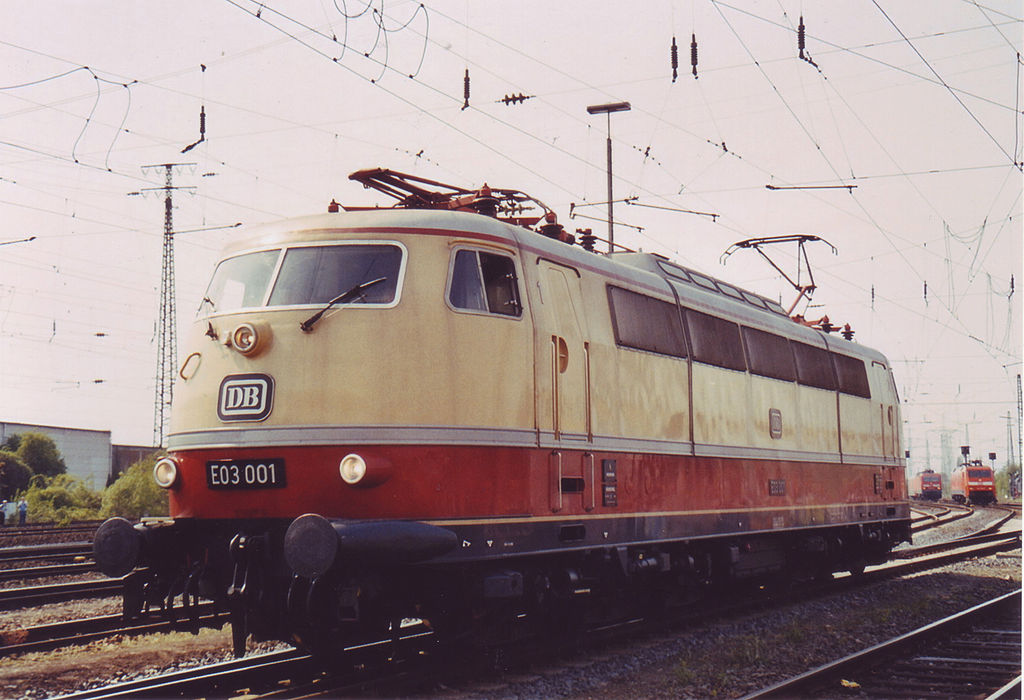Specific Item Information: Model: The locomotive has a built-in digital decoder and sound generator for operation with DCC and Selectrix. The motor has a flywheel. 4 axles powered. Traction tires. The headlights and marker lights change over with the direction of travel and can be controlled digitally. Warm white LEDs are used for this lighting and there is cab lighting and engine room lighting. All of the lighting can be controlled digitally. The locomotive has a close coupler mechanism. It also has separately applied grab irons. Length over the buffers 126 mm / 4-15/16".
Prototype History: The Baureihe 103 is a class of electric locomotives in Germany, originally operated by Deutsche Bundesbahn. For a long period, they were perceived as flagships of the DB rolling stock.
The first serial type Class 103.1 was put into service 27. May 1970. DB planned to introduce a new Intercity system with fast first class connections between major cities in autumn of 1971, so the specification sheet demanded Class 103.1 to be capable of pulling a 400-tonne (390-long-ton; 440-short-ton) train at 200 km/h (120 mph). With a total number of 145 units Class 103.1 became the backbone of German Trans Europ Express and InterCity lines. Starting with 103 216, the locomotive body was extended by 700 mm (27.6 in) in order to provide more space in the driver's cab. e.
The first serial type Class 103.1 was put into service 27. May 1970. DB planned to introduce a new Intercity system with fast first class connections between major cities in autumn of 1971, so the specification sheet demanded Class 103.1 to be capable of pulling a 400-tonne (390-long-ton; 440-short-ton) train at 200 km/h (120 mph). With a total number of 145 units Class 103.1 became the backbone of German Trans Europ Express and InterCity lines. Starting with 103 216, the locomotive body was extended by 700 mm (27.6 in) in order to provide more space in the driver's cab. e.
Road Name History: Deutsche Bahn AG (abbreviated as DB, DB AG or DBAG) is a German railway company. Headquartered in Berlin, it is a private joint-stock company (AG), with the Federal Republic of Germany being its single shareholder. Deutsche Bahn describes itself as the second-largest transport company in the world, after the German postal and logistics company Deutsche Post / DHL, and is the largest railway operator and infrastructure owner in Europe. It carries about two billion passengers each year.
Deutsche Bahn (literally "German Railway" in German) came into existence in 1994 as the successor to the former state railways of Germany, the Deutsche Bundesbahn ("German Federal Railway") of West Germany and the Deutsche Reichsbahn ("German Empire Railway") of East Germany. It also gained ownership of former railway assets in West Berlin held by the Verwaltung des ehemaligen Reichsbahnvermögens (Administration of the Former Reichsbahn Assets).
Deutsche Bahn (literally "German Railway" in German) came into existence in 1994 as the successor to the former state railways of Germany, the Deutsche Bundesbahn ("German Federal Railway") of West Germany and the Deutsche Reichsbahn ("German Empire Railway") of East Germany. It also gained ownership of former railway assets in West Berlin held by the Verwaltung des ehemaligen Reichsbahnvermögens (Administration of the Former Reichsbahn Assets).
Brand/Importer Information: Trix is a German company that originally made Trix metal construction sets. one of its co-founders was Stephan Bing, the son of the pioneer toy-maker industrialist Ignaz Bing. In 1935 the company began producing the electrically powered model trains that it became famous for, under the Trix Express label. Prior to the outbreak of World War II the Trix company produced a small range of fairly unrealistic AC powered three rail models running at 14 volts.
N gauge models under the Minitrix brand were made from the late 1960s mostly of European prototypes (German and British primarily). North American prototypes were also manufactured and marketed under the Aurora "Postage Stamp" brand; later these items were sold under the American Tortoise, Model Power and Con-Cor brands. Trix sometimes utilized North American consultants to aid in the design of this portion of the product line. The "Hornby Minitrix' brand was used in the 1980s for a short lived range of British outline models using the earlier product tooling.
Trix's owner in the 1980s and 1990s was Mangold, which went bankrupt in the late 1990s and Märklin purchased the assets in January 1997. In part, this purchase was a reflection of Märklin's need for added production capacity; Trix had been manufacturing certain items for Märklin in previous years. The purchase was also in response to the earlier purchase of the Karl Arnold company by the Italian company Rivarossi; Märklin were very keen to take over Trix market share in 2-rail H0 and especially Minitrix, until then Märklin had not marketed N gauge models. In 2003, Märklin introduced its first N gauge models under the well established Minitrix brand. A number Märklin H0 scale three-rail AC locomotives have also been introduced in two-rail DC versions under the Trix logo and many models are shared between the two brands.
From Wikipedia
N gauge models under the Minitrix brand were made from the late 1960s mostly of European prototypes (German and British primarily). North American prototypes were also manufactured and marketed under the Aurora "Postage Stamp" brand; later these items were sold under the American Tortoise, Model Power and Con-Cor brands. Trix sometimes utilized North American consultants to aid in the design of this portion of the product line. The "Hornby Minitrix' brand was used in the 1980s for a short lived range of British outline models using the earlier product tooling.
Trix's owner in the 1980s and 1990s was Mangold, which went bankrupt in the late 1990s and Märklin purchased the assets in January 1997. In part, this purchase was a reflection of Märklin's need for added production capacity; Trix had been manufacturing certain items for Märklin in previous years. The purchase was also in response to the earlier purchase of the Karl Arnold company by the Italian company Rivarossi; Märklin were very keen to take over Trix market share in 2-rail H0 and especially Minitrix, until then Märklin had not marketed N gauge models. In 2003, Märklin introduced its first N gauge models under the well established Minitrix brand. A number Märklin H0 scale three-rail AC locomotives have also been introduced in two-rail DC versions under the Trix logo and many models are shared between the two brands.
From Wikipedia
Item created by: gdm on 2019-05-19 20:01:07
If you see errors or missing data in this entry, please feel free to log in and edit it. Anyone with a Gmail account can log in instantly.
If you see errors or missing data in this entry, please feel free to log in and edit it. Anyone with a Gmail account can log in instantly.


